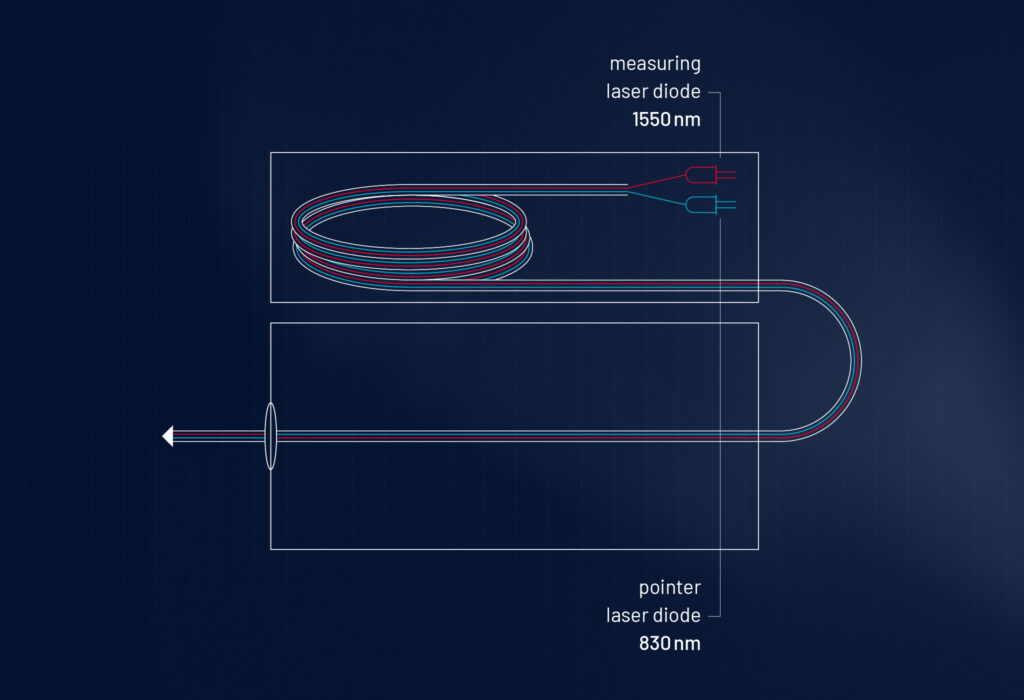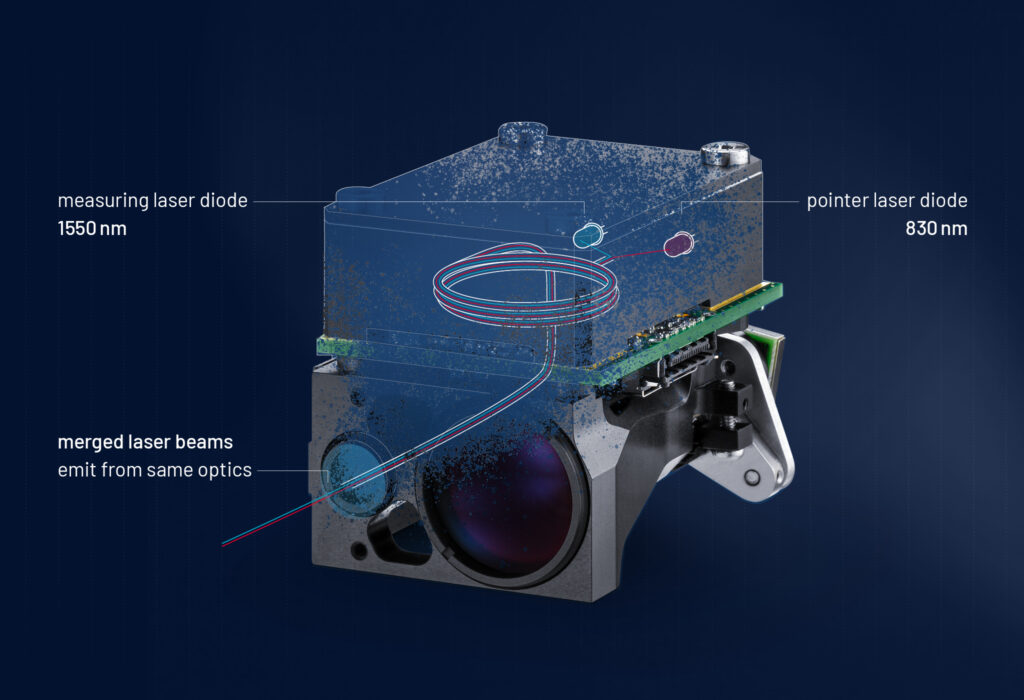When integrating a laser rangefinder (LRF) and a laser pointer within a host system the challenge has always been how to do it easily and accurately to guarantee optimal performance. Not anymore.
Aligning a laser within an electro-optical system is tough. If it is not done correctly, it has a huge negative impact on the performance of the entire electro-optical system. To overcome the alignment challenge, Safran Vectronix has developed a solution to assist integrators. It is available as an option for the latest Ultisense fiber lasers, allowing simultaneous operation of laser pointer and laser rangefinder.
What is the Coaxial Pointer technology?
The Coaxial Pointer technology equips range finding modules with a second laser. However, these are not two individual lasers with separate optics placed next to each other but coupled to emit into the same fiber.
Due to this unique approach and the nature of optical fiber, these two beams are now perfectly coupled and will always follow the same beam path. One is the fiber laser with a wavelength of 1550 nm, which is responsible for the laser distance measuring, and the other is the pointer laser diode with a wavelength of 830 nm. Both laser beams are merged into the same fiber, and they come out of the same fiber and the same optics.

Benefits of the Coaxial Pointer technology
Economical & correct alignment in Production/Development
A major advantage of the alignment with the 830 nm pointer beam is, that it is easy to detect and therefore can be done with a regular (or NIR camera), which is significantly cheaper than a 1550 nm camera. Doing this, one can always be sure, that the bore sighting of the 1550nm is correct, as well. This has many advantages for an efficient production process and supports integration development. For eye-safe alignment in the production a class1 pointer is also available, allowing to operate the lasers any-time without any additional safety installations.
Pointer Boresight Stability
Both beams are always automatically correctly aligned, which means whenever the LRF spot is moving, the pointer follows it. As the fiber coupling is a welded glass junction a misalignment between the pointer beam and laser beam is excluded. Whatever the mission, however harsh the environment this technology means you can use the pointer for accurate, reliable, and fast alignment of the LRF.
Check alignment out on the field
The Coaxial Pointer technology does not only create benefits for the system integrator but also for the end-user in the field. With our Coaxial Pointer, which is still invisible for the human eye, it is possible to quickly check, with a standard night vision device or camera, whether the alignment of the measuring laser is still in the optical main axis. This is essential as the accumulation of environmental influences can massively affect the individual sensor alignment in the overall system, which if not accurate, can have catastrophic consequences.
Align the whole system to another device
Additionally, the technology allows the user to quickly align the whole EO-System to other systems and devices being used during a mission. E.g., the EO-system is on a vehicle, and it needs to be aligned to a weapon station – this can be done quickly out on the field with the support of the Coaxial Pointer.
Pointer for target handover
In addition, the Coaxial Pointer allows users to mark a target to hand it over to another person. For extended visibility in the field, we offer a non-eye-safe high power version of the pointer.
Conclusion
The Coaxial Pointer is a clever solution that both supports integrators and benefits users of the overall system in the field. Safran Vectronix have received excellent feedback on this solution – contact us to find out more.
